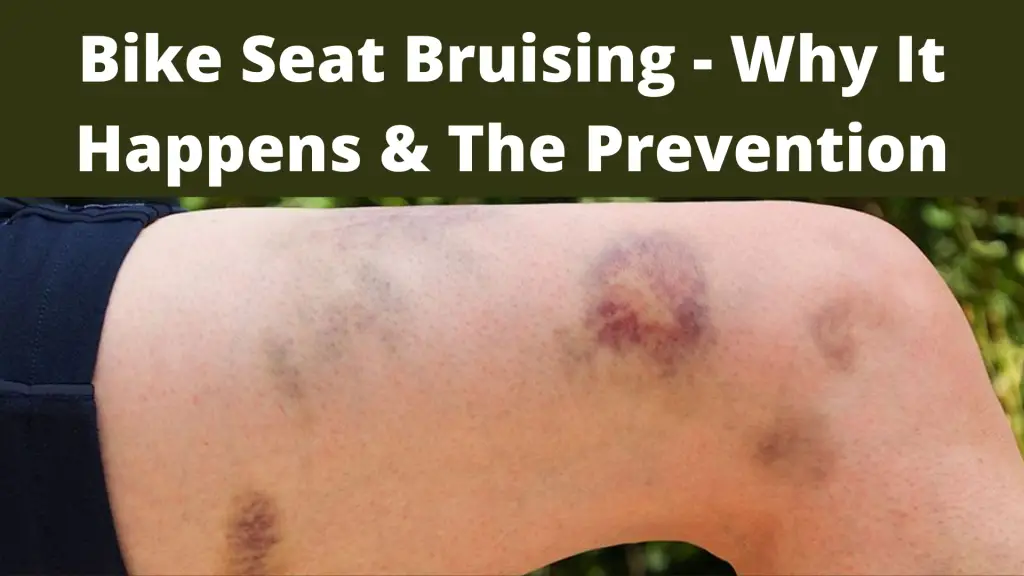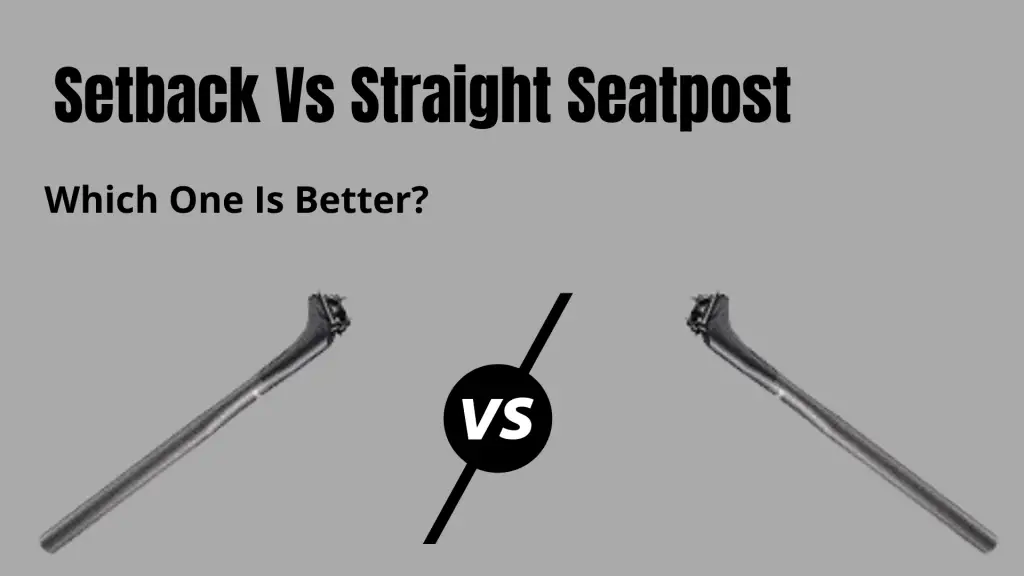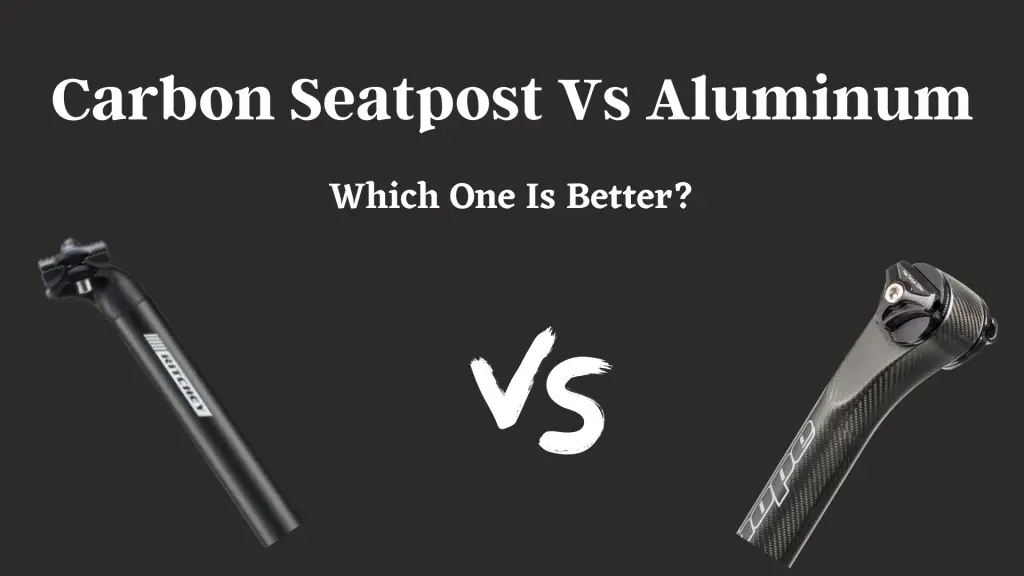Who doesn’t love command posts on a mountain bike? They allow you to get low and to build traction while riding roughly in downhill terrains. But, any trouble with it can be quite a difficult one to be fixed.
So, exactly what are the Specialized Command Post problems?
Slow return to power position, position actions becoming sticky, etc are some common occurrences. The command post needs to be checked and parts can be replaced to solve the problems.
In this article, we will be discussing all these- as well as step-by-step solutions to the problems. Now, let’s dive into the depth of the topic!
Command Post Problems: An Overview
Before starting a more detailed discussion about the problems, here’s a preview table of the causes and solutions of Specialized Command Post problems:
| Issue | Reason | Solution |
| Sticky action between the positions | 01. Lack of grease/ Grease migrated from the sliding surface. 02. Pressure is released through a seal. | 01. Unhead seal head with a strap wrench and grease the surface of the inner tube. 02. Increase air pressure as required. |
| Power position return is slow | 01. Internal parts of the post have been contaminated. 02. Air pressure is low. 03. The seat collar is too tight. 04. Riding in cold weather (below 32 degrees F/ 0 degree C). | 01. Reassemble the seal and lube the internal parts 02. Increase air pressure to a workable range. 03. Loosen tension until the seat post doesn’t slip inside the frame. 04. Perform cold weather tunes per manufacturer’s recommendation. |
| Post moves or doesn’t move while lever-activated | 01. Cable and housing friction. 02. Too little cable tension. 03. Lockpin is too tight. | 01. Lubricate or replace the cable. 02. Increase tension by adjusting the barrel. 03. Reset lock pin height. |
| Slow return action after setting air pressure | 01. Air leakage due to seal damage. | 01. Replace or service seal head assembly. |
Command Post Problems: Reasons and Troubleshooting
As you know, there are different designs of Specialized Command Posts available. All these posts have unique services and functions. Nonetheless, most of the Command Posts have the same basic components like seals, bushing, cables, actuator, etc.
Any problems that may happen to these parts are quite similar. So, similar servicing routines are needed to get the best out of them.
By now, you have had a brief idea about the causes and solutions of the problem that your specialized command post may show. You might still be confused about the problem you are facing with your command post.
Don’t worry, we’ve got you. To have a clearer idea, let’s move on to some common problems you might face. We have sequenced the issues that you might be facing and added the causes and solutions.
Be careful!
As a biker, you must be aware of the air pressure inside the Command Post. Before starting all the steps, make sure to fully discharge the air chamber. As you know, the air pressure determines the speed rate of your bike. The more the PSI, the faster the bike.
Usually, the average air pressure range is between 15-35 PSI (1.03-2.41 BAR). This pressure may vary depending on your Specialized Command Post model. However, it is better not to exceed 35 PSI ( 2.41 BAR) in the air chamber. Secondly, the Command Post is marked with a minimum insertion line. This line is for the safety of the Command Post.
Lastly, you must make sure that the seat tube is made to accept a 30.9 – 31.6mm seat post. As we have already mentioned, different bike models have different Command Post sizes. So, before starting any procedure it is better to consult an expert.
Problem: Faulty Cable on a Specialized Command Post
Usually, a Command Post is internally or externally routed. Now, you must be thinking about how to check if your command post is internally routed or externally.
The solution is very simple. You need to take a look at the dropper level. Is there any cable coming out of it? If yes, it is externally routed. On the other hand, for an internally routed specialized command post, the cable is adjusted inside the frame.
Now that we have figured out how our cable is routed, let’s get to fixing its problem. “How would I know what I need to do with the cable?”- you may ask. The answer is simple- according to the severity and type of problem(s) you are facing.
Solution 1: Readjustment of the Cable
Readjustment of the cable is needed when you feel that the cable tension is not right. This makes the Command Post not move while the lever is activated. Let’s move to the step-by-step to readjust the cable on a Specialized Command Post.
(Oh and in case you are wondering how to know the table tension is right- checkout step #3 below!)
Things You Will Need:
- Allen wrenches
- Zip tie
- Re-adjustable wrench
- Gear cable
- Lubricating grease
- Isopropyl Alcohol
- Lint-free towel
Step 1 of 4: Check the Cable
Firstly, if the cable is routed on the outside of the frame, the cable and housing need to be inspected. You need to carefully inspect to find any kink, frayed cable, or corrosion. The cable needs to be cleaned properly to remove any excess dirt. You can clean the cable by gently wiping it with a cotton-based cloth.
On the other hand, if your cable is rooted internally, loosen your seat post collar. This can be done with the Allen wrench. You need to remove the seat post from the frame to inspect any wear. If the internal routing has small frames, the seat post needs to be lowered.
Step 2 of 4: Seat Post Replacement
If the cable and housing are in good shape, the next step will be to check cable tension. You also will need to replace the seat post if it has been removed. Make sure your seat post collar is tightened. If not, tighten it with the Allen wrench.
Step 3 of 4: Checking Cable Tension
Over time, the cable command post can settle into the housing for your dropper seat post. This causes the cable to loosen. However, the dropper seat post has a barrel adjuster near the lever. This helps make adjustments to the cable tension.
Now, press the lever of the dropper post and see if the post stays up or down. If nothing happens, there is not enough tension on the cable.
Step 4 of 4: Cable Re-adjustment
To add tension to the cable, turn the barrel adjuster counterclockwise. The command post also needs to be checked by pressing the lever. If the dropper post moves slowly, you can add a little more tension. This can be done by turning the barrel adjuster counterclockwise a few more times.
On the contrary, if the dropper post moved without pressing the lever, too much tension was added to the cable. For this, tension needs to be removed. For removing the tension you need to turn the barrel adjuster clockwise.
Solution 2: Replacement of the Cable
For problems when your post moves without the lever being activated, the cable needs to be reset or replaced. Also, if the cable on your dropper post is frayed or sticky, it’s time you replaced it. Here are five straightforward steps to help you do just that.
Things You Will Need:
- Zip tie
- Re adjustable wrench
- Gear cable
- Lubricating grease
- Isopropyl Alcohol
- Lint-free towel
- standard derailleur cable
Step 1 of 5: Cable Exposure:
First, clean the post and release the air. Now, you have to cut the crimp behind the remote lever. Loosen the pinch bolt by two full turns. Make sure to mark the seat post with tape just above the seat collar to reinstall it at the correct height.
Loosen any fastener and slide the post out of the seat tube. Throughout the process, guide the outer cable through the frame’s routing port.
Step 2 of 5: Removal of the Inner Cable:
Unhook the cable coming out of the actuation lever on the base of the post. Pull the old inner cable all the way out. For an externally routed cable, just dispatch the old cable. Thread the outer cable through the full length of the post end.
Then, you need to plug the outer cable ferrule into the port in the post. Now you have to pull the inner cable taut from the lever end.
Step 3 of 5: Replace the Inner Cable and the Post:
Hook the cable onto the actuator lever. Now you need to pull the inner cable taut from the lever end. You also need to plug the outer cable ferrule into the port in the post. Also, replace the post in the seat tube and gently guide the cable outside the frame.
When the post is installed up to the tape mark, stop the process. It is the correct height. Retighten the seat clamp and cable.
Step 4 of 5: Remote Lever Attachment:
Thread the inner cable by the remote lever’s cable port. Pull the inner cable and remote lever tightly with your thumb towards you. Tighten the cable pinch bolt. It is recommended to keep the torque setting at 1.2 Nm.
Step 5 of 5 Tighten the Cable:
Actuate the lever to pre-stretch the cable. You may also need to retighten any slack cable after loosening the pinch bolt. Cut the cable about 1 cm from the remote.
Finally, install a cable end crimp and tuck it into the recess inside the lever.
Problem: Malfunctioning Seal Head
You might face problems like a slow return of the command post a few days after pumping air. This happens due to any leakage, for which the air pressure cannot be held.
Solution: Replacement of Seal Head
The only solution to this problem is to replace the seal head. Here’s a step-by-step instruction to replace the seal head if your post air is leaking.
Things You Will Need:
- Seal head installation tool kit
- Slick Honey grease
- Silicon grease
- 10cc of weight fork oil ( if the temperature is below 45 degrees F)
- Torque wrench
Step 1 of 6: Opening the Seal Head
Clean off the entire post and release the air inside it. Clamping the outer tube in vice blocks firmly, unthread the seal head. If the head is too tight in the bike stand, you can use the seat tube of your bike.
Step 2 of 6: Disassembling the Post
Activate the remote plunger to disengage the inner collet from the groove inside the outer tube. Now pull the upper assembly out of the post. Wipe off all the debris with a lint-free towel and isopropyl alcohol.
Now, remove the lower bushing, top-out washer, upper bushing and top-on ring. You also have to remove the keyways after activating the plunger.
Step 3 of 6: Placement of the Seal Head
Install the seal head using the tool kit. The tool kit guides the seal head over the sharp edge of the inner tube. One is used to fill the lower bushing seat, and the other to smoothen out sections behind the collet.
The seal head cannot be removed without these tools as failure may damage the seal head.
Step 4 of 6: Lubrication
Grease the inner tube, collet, quad o-ring, and the tri lip seal with slick honey grease. If you often ride below 45 degrees F, specialists recommend using fork oil in the outer tube. If you do so, make sure to swivel the outer tube around to make the oil coat the inside. Now, activate the plunger and carefully work the seal head over the collet and slide it up the shaft.
Step 5 of 6: Inner Tube Installation
Remove the Seal head installation kit and install the keyways and lower bushing. Compressing the lower bushing at the time of installation will fit it snuggly. Now you again need to grease the collet and keyways with silicon grease. After this, you need to activate the plunger, line it up with the keyways.Install the inner tube into the outer one.
Step 6 of 6: Seal Head Installation
Now slide the top out washer, upper bushing, and top out o-ring down the inner tube junction. Carefully push all of them into the outer tube seat. You can add a little extra slick honey grease to the inner tube.
Finally, thread the seal head by hand. You also need to make sure that the top o-ring is not sticking out of the outer tube seat, as it can damage the installation seal. You need to tighten the seal head assembly to 100 kg-cm(9.81Nm). Inflate the post and now you’re ready to cycle.
Maintenance Tips for Your Command Post:
To keep the specialized command post in its best form, specialists recommend taking some maintenance steps. This routine maintenance is crucial for peak performance. To keep the Command post in tip-top form, keep the following tips in mind:
Before Every Ride
Gently clean the inner tube with a rag. You also need to make sure that the lever action is smooth and the cable is kink-free. The actuator should be lubed to keep it smooth and trouble-free.
After Every Ride
Gently wash mud and dirt off the post shaft. Try to be careful not to pressure-wash the wiper seal of the post. To maintain a wiper seal, apply a small amount of suspension lube to clean the seal and lubricate it. Avoid degreasing and penetrating oil, as they strip out the factory grease from the wiper seal. This may result in reduced longevity.
Every 3 Months
Check the air pressure with a standard shock. It must be within the range of 15-35 PSI (1.03-2.41 BAR) as per your model. Lubricate the actuating cable and adjust the inline adjuster barrel if needed. If the bike is ridden in muddy condition, lubricate the cable housing with Teflon-based lubricant.
Every 6 Months
If ridden in extreme condition, a full servicing of wear items is necessary. Things that are required for the replacement of parts for long term maintenance are:
- Dirt wiper
- Seal
- Top out ring
- Alignment keys
- Expansion collets
Frequently Asked Questions (FAQs)
How much PSI should be there in the dropper post?
The pressure should be between 200-250 PSI. All dropper posts use spring to hold the seat upwards. So, the pressure should be relatively high.
Is it okay to clamp a Command Post?
Yes, you can clamp a Command Post below the collar. For that, make sure to clean the post after clamping.
Should I store my bike with the Command Post up or down?
It is best to store your bike with the Post in the extended position. Storing your bike with the Post in a downward position may put significant stress on the internal seal. This will damage the seal.
Bottom Line
We hope this article has shed light on the information you were missing thus far. We can safely assume that now, you know the problems you may face- and their necessary solutions.
Are there any unique Specialized Command Post problems that you are facing? Let us know in the comments below.
Have a great day!


